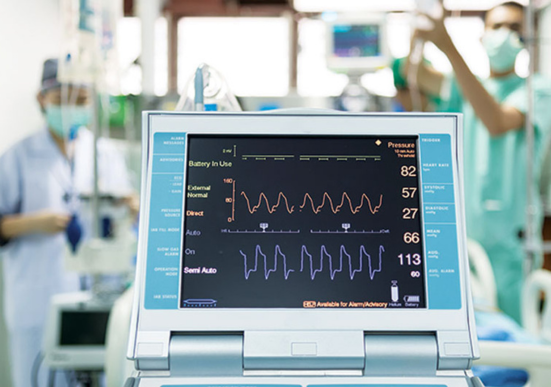
Best Practices in Emergency and Intensive Care: Insights from a General Physician
1. Introduction
As a general physician in Nashik, Dr. Ganesh Motwani has extensive experience in emergency and intensive care. With a commitment to providing the highest quality of care to patients in need, Dr. Motwani has developed a set of best practices and insights that have proven to be invaluable in urgent medical situations. In this blog, we will explore some of Dr. Motwani's key insights and recommendations for emergency and intensive care, shedding light on the importance of quick and effective medical intervention in Nashik.
2. Importance of Emergency and Intensive Care
Emergency and intensive care play a crucial role in ensuring optimal outcomes for patients in critical conditions. Dr. Motwani emphasizes the significance of timely and efficient interventions in emergency situations. These specialized care settings are designed to provide immediate and intensive medical attention, often making a critical difference in patient outcomes. By understanding the importance of emergency and intensive care, healthcare professionals can better serve their patients in urgent medical scenarios and contribute to saving lives. Stay tuned as we delve deeper into the best practices and strategies for delivering top-notch emergency and intensive care in Nashik.
3. Key Insights from a General Physician
Key Insights from a General Physician: Dr. Motwani highlights the pivotal role of effective communication and collaboration among healthcare teams in emergency and intensive care settings. Clear communication ensures streamlined care delivery and minimizes error rates. Additionally, prioritizing continuous training and staying updated on the latest medical advancements are fundamental for providing high-quality care. Dr. Motwani stresses the significance of maintaining composure under pressure and having a structured approach to decision-making in critical situations. By integrating these insights into practice, healthcare professionals can enhance patient outcomes and deliver exceptional emergency and intensive care services. Stay informed for more expert guidance on optimizing emergency and intensive care practices.
4. Implementing Best Practices in Emergency and Intensive Care
Now that we have emphasized the importance of effective communication, collaboration, continuous training, and composure in emergency and intensive care settings, it is crucial to delve into the implementation of these best practices. Healthcare professionals must prioritize teamwork, utilize advanced technologies, and establish clear protocols to optimize patient care outcomes. Dr. Motwani's insights highlight the significance of staying updated on medical advancements and maintaining a structured approach to decision-making. By integrating these best practices into daily workflows, healthcare teams can enhance efficiency, minimize errors, and ultimately elevate the quality of emergency and intensive care services. Stay tuned for practical tips on successfully integrating these strategies into your healthcare practice.
5. Collaborating with Healthcare Providers for Optimal Patient Care
Collaborating with healthcare providers is key to ensuring optimal patient care in emergency and intensive care settings. Establishing open lines of communication, sharing critical information effectively, and coordinating care plans are essential for seamless teamwork. By fostering a collaborative environment, healthcare teams can leverage the diverse expertise of various providers to deliver comprehensive and patient-centered care. Regular interdisciplinary meetings, utilizing electronic health records for timely updates, and involving patients and their families in care decisions are crucial steps towards improving patient outcomes. Stay tuned for practical insights on enhancing collaboration and maximizing the impact of healthcare providers in emergency and intensive care settings.
6. Training and Continuous Education for Healthcare Professionals
Maintaining up-to-date knowledge and honing skills through continuous education is paramount for healthcare professionals working in emergency and intensive care settings. Ongoing training not only ensures that providers are equipped to handle complex cases but also fosters a culture of learning and improvement within the healthcare team. Investing in professional development opportunities, attending relevant workshops and conferences, and participating in simulation exercises are effective ways to enhance clinical competence and stay abreast of evolving practices. By prioritizing training and continuous education, healthcare providers can enhance their capabilities and deliver high-quality care to patients in emergency and intensive care settings. Stay tuned for tips on how to integrate learning opportunities into daily practice.
7. Conclusion: Improving Patient Outcomes in Emergency and Intensive Care Settings
As healthcare providers, our commitment to ongoing education and skill development directly impacts patient outcomes in emergency and intensive care settings. By embracing a culture of learning, we equip ourselves with the expertise needed to navigate complex cases efficiently and effectively. Through investing in professional development and participating in training opportunities, we not only enhance our clinical capabilities but also contribute to a cohesive healthcare team focused on delivering top-notch care. By remaining dedicated to continuous improvement and staying updated on best practices, we can optimize patient outcomes and ensure that individuals receive the highest standard of care during critical moments. Let's prioritize ongoing education to make a meaningful difference in emergency and intensive care settings.